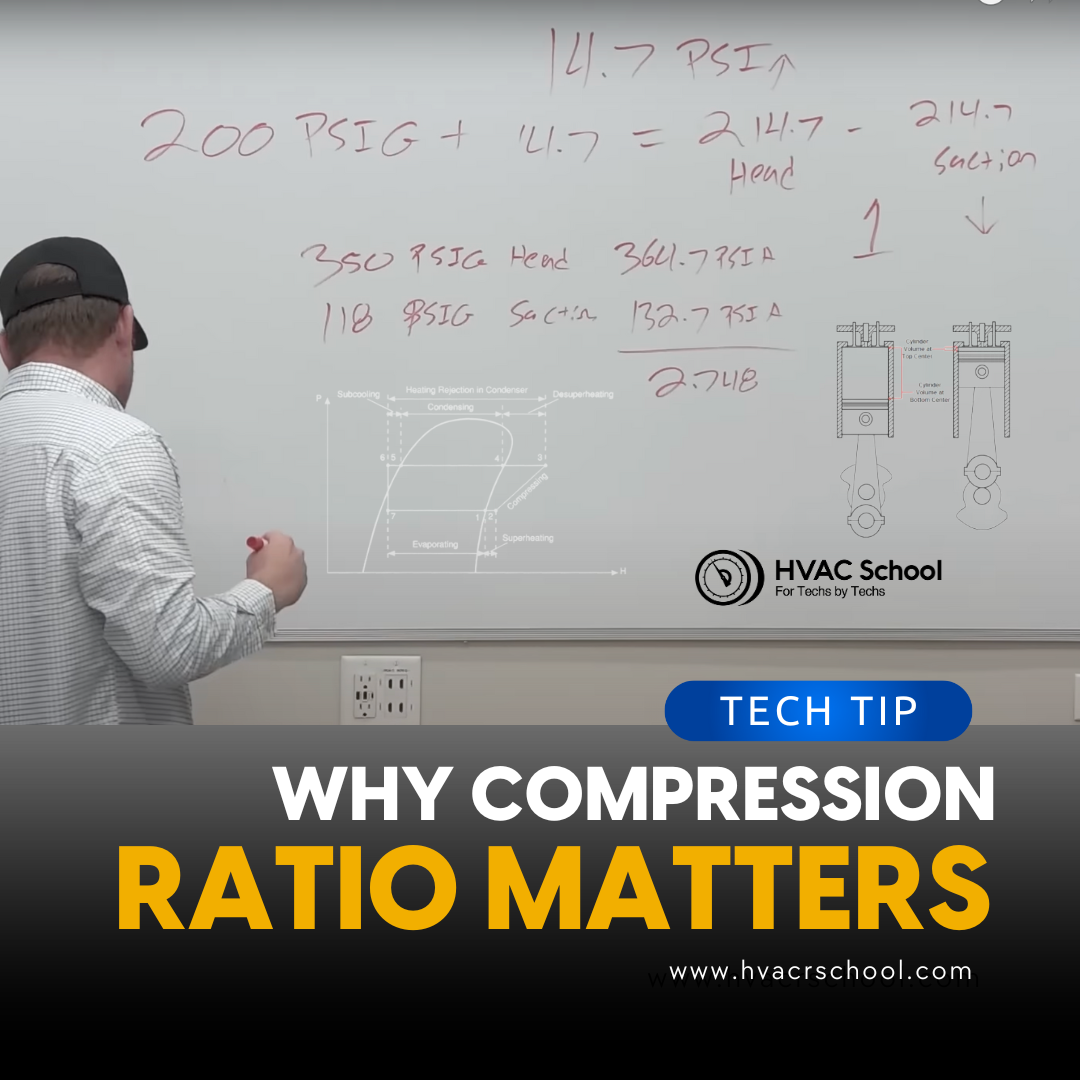Get Tech Tips
Subscribe to free tech tips.
Introduction to SORIT Valves

Photo Courtesy of Parker/Sporlan
There are many brands and styles of evaporator pressure regulating valves (EPR), but none as common as the Parker/Sporlan SORIT and ORIT valves.
The diagram above clearly shows some of the common applications. An EPR or “hold back” valve maintains a set suction line pressure and, therefore, coil temperature. That is critical in situations where multiple evaporators of different design temperatures connect back to a shared suction header, common in grocery store refrigeration.

The EPR valve “holds back” pressure in the evaporator to a set pressure so long as there is a pressure differential between the evaporator coil and the shared suction header. The suction header must have a LOWER pressure than the lowest design pressure of any evaporator connected to it.

A SORIT valve is an EPR valve or ORIT (Open on Rise of Inlet Pressure) valve that also includes a solenoid stop. The purpose of the solenoid stop is to prevent the defrost gas from entering the suction line and overheating/overloading the compressors when the defrost solenoid opens and back feeds the evaporator to defrost.

For a full and detailed explanation of ORIT and SORIT valves, you can read BULLETIN 90-20 from Parker/Sporlan.
—Bryan
P.S. — Matthew Taylor with Kalos Services made an entire video series about parallel racks, and Part 12 covers EPRs and SORIT valves. You can watch it at https://hvacrschool.com/videos/rack-refrigeration-cycle-part-12-epr/. His 6th Annual HVACR Training Symposium presentation was also about EPRs and how they affect the entire rack. Learn more about the symposium or purchase your virtual ticket at hvacrschool.com/symposium.










Comments
Can u say about ADP (apparatus dew point)
Can u say about ADP (apparatus dew point)
Wow that was unusual. I just wrote an incredibly long comment but after I clicked submit my comment didn’t show up. Grrrr… well I’m not writing all that over again. Anyhow, just wanted to say fantastic blog!
Wow that was unusual. I just wrote an incredibly long comment but after I clicked submit my comment didn’t show up. Grrrr… well I’m not writing all that over again. Anyhow, just wanted to say fantastic blog!
cialis prix: Tadalafil 20 mg prix en pharmacie – Cialis generique prix tadalmed.shop
cialis prix: Tadalafil 20 mg prix en pharmacie – Cialis generique prix tadalmed.shop
cialis prix: Tadalafil 20 mg prix en pharmacie – Cialis generique prix tadalmed.shop
cialis prix: Tadalafil 20 mg prix en pharmacie – Cialis generique prix tadalmed.shop
Pharmacie en ligne livraison Europe pharmacie en ligne france pas cher or Pharmacie Internationale en ligne
https://cse.google.es/url?sa=i&url=http://pharmafst.com vente de mГ©dicament en ligne
[url=http://www.allbeaches.net/goframe.cfm?site=http://pharmafst.com]pharmacie en ligne[/url] pharmacie en ligne france fiable and [url=http://www.1moli.top/home.php?mod=space&uid=111459]pharmacie en ligne pas cher[/url] pharmacie en ligne fiable
Pharmacie en ligne livraison Europe pharmacie en ligne france pas cher or Pharmacie Internationale en ligne
https://cse.google.es/url?sa=i&url=http://pharmafst.com vente de mГ©dicament en ligne
[url=http://www.allbeaches.net/goframe.cfm?site=http://pharmafst.com]pharmacie en ligne[/url] pharmacie en ligne france fiable and [url=http://www.1moli.top/home.php?mod=space&uid=111459]pharmacie en ligne pas cher[/url] pharmacie en ligne fiable
achat kamagra Kamagra pharmacie en ligne or Kamagra pharmacie en ligne
http://pachl.de/url?q=https://kamagraprix.com:: kamagra pas cher
[url=http://www.google.ad/url?q=https://kamagraprix.com]Acheter Kamagra site fiable[/url] Kamagra pharmacie en ligne and [url=http://www.donggoudi.com/home.php?mod=space&uid=2822347]kamagra pas cher[/url] Kamagra pharmacie en ligne
achat kamagra Kamagra pharmacie en ligne or Kamagra pharmacie en ligne
http://pachl.de/url?q=https://kamagraprix.com:: kamagra pas cher
[url=http://www.google.ad/url?q=https://kamagraprix.com]Acheter Kamagra site fiable[/url] Kamagra pharmacie en ligne and [url=http://www.donggoudi.com/home.php?mod=space&uid=2822347]kamagra pas cher[/url] Kamagra pharmacie en ligne
pharmacie en ligne avec ordonnance [url=http://pharmafst.com/#]pharmacie en ligne pas cher[/url] pharmacie en ligne france pas cher pharmafst.shop
pharmacie en ligne avec ordonnance [url=http://pharmafst.com/#]pharmacie en ligne pas cher[/url] pharmacie en ligne france pas cher pharmafst.shop
Cialis sans ordonnance 24h: Acheter Viagra Cialis sans ordonnance – cialis prix tadalmed.shop
Cialis sans ordonnance 24h: Acheter Viagra Cialis sans ordonnance – cialis prix tadalmed.shop
pharmacie en ligne avec ordonnance: pharmacie en ligne sans ordonnance – trouver un mГ©dicament en pharmacie pharmafst.com
pharmacie en ligne avec ordonnance: pharmacie en ligne sans ordonnance – trouver un mГ©dicament en pharmacie pharmafst.com
https://tadalmed.com/# cialis generique
https://tadalmed.com/# cialis generique
casino olympe: casino olympe – olympe casino avis
casino olympe: casino olympe – olympe casino avis
To leave a comment, you need to log in.
Log In